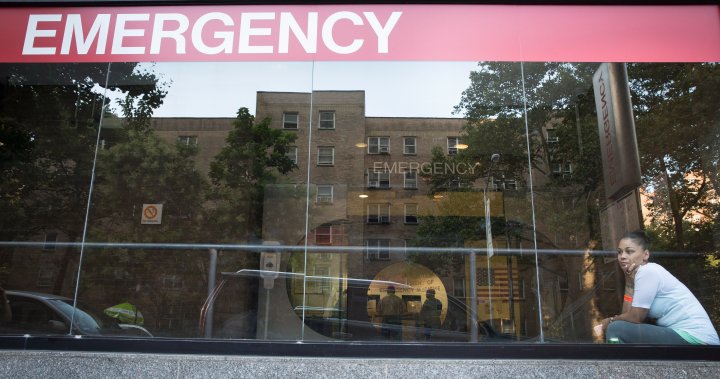Women have better survival rates and lower hospital readmission rates when treated by female physicians, a new study found.
The observational study published Tuesday in Annals of Internal Medicine found a contrast in mortality rates depending on the gender of the treating physician in the United States. Among women treated by female physicians, 8.15 per cent died within 30 days, while 8.38 per cent of those treated by male physicians met the same outcome.
The researchers found the same pattern for hospital readmission rates.
This difference may seem small, but lead author Dr. Yusuke Tsugawa, an associate professor-in-residence of medicine at the David Geffen School of Medicine at UCLA, said it is “clinically meaningful.”

“If you take the ratio, it’s about a three per cent difference, so a three per cent lower mortality and readmission rate when patients were treated by female physicians compared with patients who were treated by a male physician,” he told Global News.
“And if we put this into context, for mortality, for every two 420 hospitalizations, one fewer death will occur when female physicians provide care, as opposed to when male physicians treat patients. And given that more than four million hospitalizations for medical conditions happen every year in the U.S., this difference is pretty big if you take into account the population level.”
Although the data is from the U.S., Tsugawa believes that given the underlying practice differences between male and female physicians, these are generally applicable patterns that could be observed in various countries. He added that it is possible that similar patterns can be seen in other countries, such as Canada.
“What our findings indicate is that female and male physicians practise medicine differently, and these differences have a meaningful impact on patients’ health outcomes,” he said.
He added that patient outcomes should not differ between male and female physicians if they practise medicine the same way.
How the study was conducted
To determine whether patients receive better care from female or male doctors, the researchers analyzed data from health insurance claims from 2016 to 2019 across the U.S.
The study focused on more than 770,000 patients hospitalized for medical conditions, all aged 65 and above. Of those, 142,500 females and 97,500 males (roughly 31 per cent) were treated by female doctors.
The latest health and medical news
emailed to you every Sunday.
The primary outcomes were 30-day mortality from the date of hospital admission and 30-day readmission from the date of discharge.
“We found that patients treated by female physicians experienced lower mortality and readmission rates than those who were cared for by male physicians,” Tsugawa said. “And the benefit of receiving treatment from female physicians was greater for female patients than for male patients.”
The observed differences in mortality among female patients were particularly notable among those who were severely ill, the study found.
Together, these findings suggest that treatment by female physicians may benefit female patients (especially severely ill female patients) more than male patients, the researchers concluded.
Sex disparities in health-care quality and hospital outcomes are well-documented, Tsugawa said.
Past studies have found that female patients often receive less intensive care and procedures, encounter delayed diagnoses more frequently, and report more negative experiences compared with male patients, said.
For example, a 2018 study published in Proceedings of the National Academy of Sciences found that gender matters when it comes to heart attack survival. The study found that women are more likely to survive heart attacks if treated by a female doctor.
A study published in 2021 in JAMA Surgery found that women patients had fewer complications if their surgeon was female. In a separate study published in JAMA Surgery in 2023, it was discovered that both male and female patients experienced fewer complications and shorter hospital stays when operated on by female surgeons. The study said the findings indicate that female surgeons have more favourable outcomes and operate more slowly than male surgeons.
Studies have also shown that female patients are more likely to have their concerns dismissed and experience discrimination, and their pain and cardiovascular symptoms may be underestimated, the researchers of the Annals of Internal Medicine study said.

One study published in 2018 in the Canadian Journal of Cardiology reported that male physicians were more likely than their female counterparts to underestimate women’s stroke risks.
“Underappreciation of symptoms and risks among female patients may result in delayed or incomplete care, ultimately leading to poorer patient outcomes,” the researchers of the Annals of Internal Medicine study said.
“These issues may be exacerbated by the limited opportunities for systematic medical training in women’s health in general medical curricula.”
Because of the past studies on this topic, Tsugawa said his team was not surprised by the findings in his study.
“Prior studies have found that female physicians are, on average, more likely to abide by clinical guidelines and spend more time listening to patients. And these factors may lead to better clinical outcomes,” he said.
Female patients may experience better outcomes with female doctors because they may feel more at ease discussing private or culturally sensitive medical issues, according to Tsugawa.
Given these findings, he emphasized the necessity for further studies to deepen our understanding of the varying patient outcomes related to gender and health care.
“One of the things the health system has to do is better-trained physicians to understand about women’s health and what is unique women’s health in order to provide better care for female patients,” Tsugawa said.
“We should make sure all physicians provide high-quality care regardless of the patient’s gender.”
© 2024 Global News, a division of Corus Entertainment Inc.





